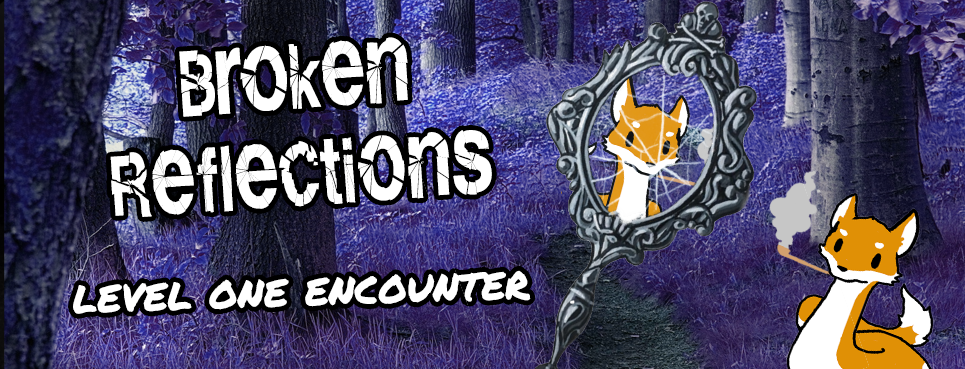Have you ever found yourself thinking maybe you’re in the wrong timeline? Like there was some pivotal moment where you found yourself living a completely different life? This last year has been such a dream for me that sometimes I find it hard to believe I’m still the same person. PaizoCon 2019 was the first time I mustered the courage to dive head-first into the professional world of tabletop gaming. And the positive reception I’ve received during PaizoCon 2020 has left me in an illusory haze of pride and fulfillment. I can’t begin to thank everyone who’s helped me reach this point: Alex Augunas, Owen KC Stephens, Amanda Plagueman, Michael Sayre, Tonya Woldridge, Descriptivist, Stunt Monkey, and the entire Know Direction, Paizo, and Organized Play Teams have all contributed so much to allow me to prove myself and chase my dreams. Watching my creative endeavors bring happiness to others has always been my goal. And the friends and fans I’ve made and met this year at PaizoCon have only solidified my faith in this philosophy. Thank you all so much for the support, feedback, and most of all, enjoying my modest contributions to our incredible hobby!
One of my first forays into making a game for my friends was recreating The Exile Zone, an Advanced Dungeons & Dragons quest originally released in InQuest magazine. What always inspired me about the quest was how the GM was supposed to tailor monstrous templates to give the PCs based on the characters’ abilities, personalities, and/or classes. While the book gave a few examples, it always struck me as a wonderful gift to give your players: An opportunity to show your appreciation for your group’s characters as a fan of your campaign. But what if instead of considering your character’s metaphorical mutations, you instead theorized what the opposite of your party would look like?
Enter the darkside mirror. This wonderful hazard from the Pathfinder Core Rulebook gives us a tool with which to roleplay the “evil” reflections of our player characters. But is an evil version of your fighter with all the same feats and gear really “the opposite”? I’d rather see what the barbarian would look like if they were a wizard instead. Or maybe the alchemist that dumped Wisdom, became a druid, and began to detest civilization instead of going down the path of a scientist! And why trap the original character and miss out on that wonderful interaction? But sitting down and making four to six entire characters for a single encounter can be something of a chore, even using a tool like Pathbuilder.
You could use the PF2E Iconics Pregenerated Characters, but as characters, these were never intended to make for a balanced combat encounter. The Gamemastery Guide has several NPCs at all different levels, but how do you choose which ones? Without knowing my party or having enough time to prep, I’d personally look at each player’s lowest ability score, and try to match it up with an NPC that uses that as their “key” or simply “best” ability score (see below). This will all depend very much on tier, and the save and statistics of this hazard will likely vary depending on your party, but I’ve included a simple hazard suitable for a 7th-level encounter. I would personally only use one mirror/reflection for every 2 PCs in the party, and even then would limit myself to 6th level NPCs. It will depend heavily on the adjustments you make to the NPC stat blocks to make them flavorful enemies for your party, and if you are running a game in the Lost Omens setting I highly recommend using the theme templates from the Lost Omens Character Guide. Either way, adjustments will have to be made to NPCs’ alignments, ancestries, spell selections, and even weapons to appropriately fit what you believe to be the best fit for an “alternate timeline” for one of your player characters, and don’t hesitate to brainstorm with your friends casually after a session. Just try to make it subtle enough that you aren’t giving any hints, perhaps by discussing options for one of your PCs!
Mirror of Divergent Paths (Hazard 6)
[Complex] [Magical] [Trap]
Stealth +19 (expert) to notice it isn’t a regular mirror
Description A magic mirror reflects characters from a parallel timeline.
Disable Thievery DC 23 (expert) to permanently disable the mirror once all mirror duplicates are dead, or dispel magic (4th level; counteract DC 22) to counteract the mirror
AC 24; Fort +15, Ref +13
Hardness 1, HP 4 (BT 2), the mirror can’t be damaged while any mirror duplicate is alive
Parallel Reflection [Reaction] (arcane, conjuration, teleportation); Trigger A creature is reflected in the mirror. Effect A duplicate steps out of the mirror and rolls initiative.
Routine (1 action) The reflections tend to have a personality, goals, and alignment in opposition to the original, as though a key point in the creature’s life went differently. They tend to resent their originals and will often attack instinctively, feeling a sense of existential dread if the original creature begins to move away from the mirror. The reflection and its gear will always cease to exist if they are killed, or their original goes further than 1,000 feet from the mirror, and the duplicate cannot touch the mirror without returning to its parallel world.
Reset The mirror is always ready to create a reflection so long as it has no currently active and living reflections.
Ability Score – Sample NPC
Strength – Executioner
Dexterity – Monster Hunter
Constitution – Warden
Intelligence – Reckless Scientist
Wisdom – Priest
Charisma – Spy






